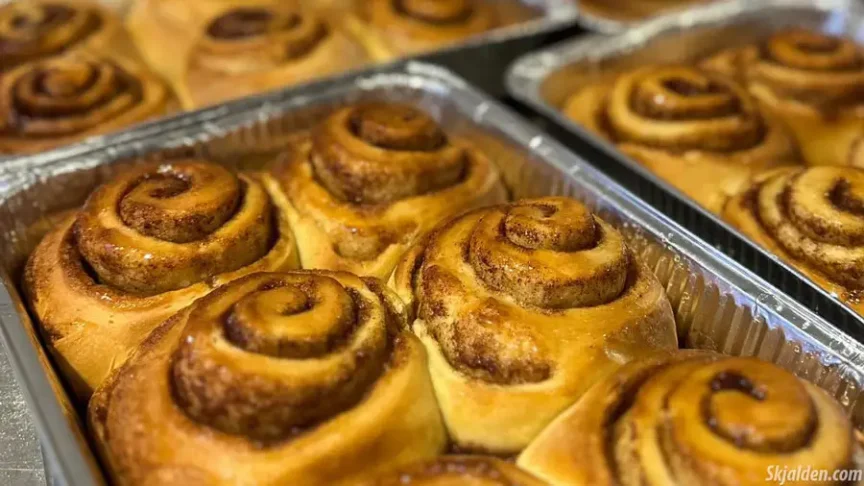Kanelsnegle, also known as cinnamon rolls in English, are a staple in Danish bakeries and homes. This delightful pastry, with its sweet cinnamon aroma and spiral shape, is not just a treat; it’s a part of Denmark’s culinary heritage. The origin of kanelsnegle is an interesting tale that intertwines Denmark’s history with its love for baking.
Tracing the Origins of Kanelsnegle
The story of kanelsnegle likely begins with Denmark’s active participation in historic trade routes. As Danish traders voyaged to Asia and other parts of the world, they brought back exotic spices, including cinnamon. This spice became a key ingredient in many Danish recipes, including kanelsnegle.
While similar pastries are found throughout Scandinavia, kanelsnegle has a unique place in Danish culture. The Danish version is known for its less sweet dough and a generous amount of cinnamon, distinguishing it from the sweeter, more icing-heavy versions found in other countries like the United States. This difference is a testament to the Danish baking philosophy, which focuses on the balance of flavors and the quality of ingredients.
In Denmark, kanelsnegle is more than just a pastry; it’s an embodiment of ‘hygge’, a Danish concept that represents coziness and comfortable warm-heartedness. The act of enjoying a kanelsnegle, whether alone with a cup of coffee or shared among friends, is a quintessential Danish experience.
The dough of a kanelsnegle is a simple yet perfect canvas for the rich, warm flavors of cinnamon and sugar. After rolling the dough, it’s layered with a mixture of butter, sugar, and cinnamon. Then, it’s rolled up, sliced into individual portions, and baked until they turn a delightful golden brown.
The Global Journey of Kanelsnegle
While the heart of kanelsnegle is in Denmark, its influence has spread worldwide. In Sweden, it’s known as kanelbulle, in Germany as Zimtschnecke, and in the United States, it’s the cinnamon roll. Each country has added its twist to the original recipe, but the essence of the kanelsnegle remains the same: a comforting, cinnamon-flavored treat.
In Sweden, for instance, kanelbulle is often infused with cardamom, adding an extra layer of flavor. In the United States, the cinnamon roll is typically larger and covered in a sweet icing, making it a more decadent version of its Danish cousin.
Kanelsnegle in Modern Danish Life
Kanelsnegle continues to be a beloved part of Danish culture. In Denmark, Wednesdays have a special connection with kanelsnegle, where a larger version known as ‘Onsdagssnegl’ is popular. This tradition not only reflects the pastry’s cultural significance but also its role in bringing people together.
Whether it’s in a cozy bakery on a cobbled Danish street or in a Danish household, kanelsnegle is a symbol of Danish hospitality and the simple joys of life. The pastry’s journey from a humble Danish kitchen to international fame is a story of culinary innovation and cultural exchange.
Kanelsnegle may have its roots in Denmark’s history and culinary traditions, but its journey across the world has made it a beloved treat for many. Its simple ingredients, combined with the comforting flavors of cinnamon and sugar, make kanelsnegle a timeless favorite. As you enjoy a kanelsnegle, remember it’s not just a pastry; it’s a piece of Denmark’s rich cultural tapestry.
